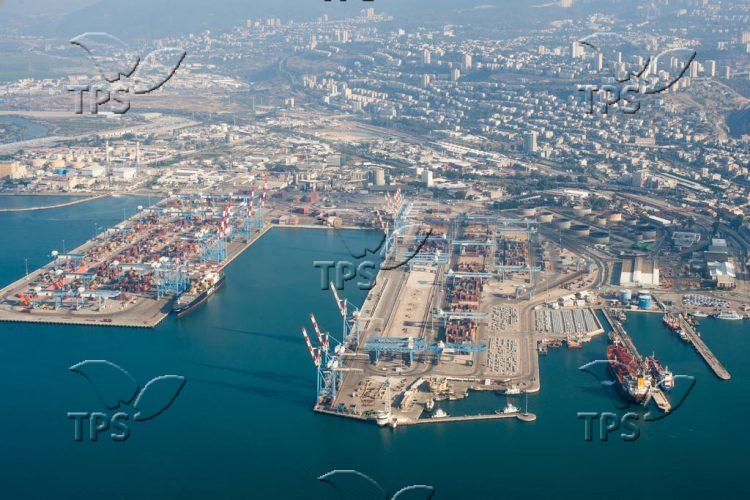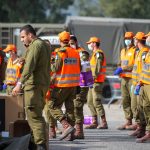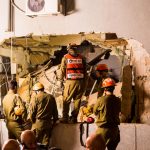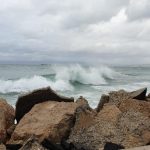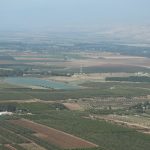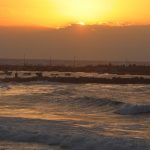After Earthquake, Israeli Disaster Expert Preaches Preparedness
Jerusalem, 16 February, 2023 (TPS-IL) -- As earthquake-stricken Turks and Syrians dug out of the rubble last week, Israel felt three relatively minor earthquakes. Those tremblors — the largest of which measured 3.9 on the Richter scale — along with steadily rising death toll from Turkey and Syria, gave new urgency to questions about Israel’s preparedness for a major earthquake.
According to Col. (Res.) Dr. Efraim Laor, one of Israel’s foremost experts on earthquakes, it’s impossible to know if the Turkish and Israeli quakes are related. But to Laor, co-founder and senior researcher at the Haifa-based National Research Institute for Disaster Reduction, what happened in Turkey will eventually happen in Israel too.
He explained why in a conversation with the Tazpit Press Service.
“It is better to concentrate not on what God is doing but what people need to do in order to prevent disruptions, victims or reduce them,” Laor told TPS. “We need to take preventive actions, prepare tools to deal with it because we will never be able to completely eliminate harm, but we can reduce harm. This thing is very important because by a few targeted actions by everyone at their own level, it is possible that the disaster will not happen to us.”
“The Israeli government decided in 2004 to prepare for an earthquake with a magnitude of 7.5, based on the fact that such things had happened even more in the distant past [in the region] and could repeat themselves,” he explained. However, in 2012, the government decided to downgrade the risk by preparing “not for a 7.5 but seven.” Furthermore, “The construction standard scenario in Israel is 6.2.”
As a result, Laor said, “Even those who are professional and decent and do as written, and build a building today, are building a building that has doubts about its resistance to an earthquake. Today they build non-durable buildings. In Israel this is a tragedy.”
“I am involved to the bone in Turkey through a Turkish rescue unit, my colleagues,” he added. “Buildings between three years old, really new, collapsed and killed people. Correct construction is cardinal.”
The last strong one in the land of Israel occurred during the British Mandate in 1927. Its epicenter was in the Jordan Valley, just north of the Dead Sea, near Jericho. The death toll from that quake isn’t clear but may have been as high 500 including 130 in Jerusalem, 150 in Shechem (Nablus), and more in Transjordan. Most were killed in collapsed houses.
“There were earthquakes that destroyed Susita, and it was no longer built around 749,” Laor said. He was referring to a town that existed in the Golan Heights which was destroyed by an earthquake in 363 CE, rebuilt, then abandoned after being destroyed by another earthquake in 749 CE.
Laor is also concerned by tsunamis, giant waves created by undersea earthquakes and volcanic eruptions.
“There was a tsunami in the Red Sea from an earthquake in Nuweiba [in the Egyptian Sinai] in 1995, with a magnitude of 7.2, that reached Eilat. It arrived reduced because the distance is great, half a meter with some damage.”
He used Haifa’s Rambam Hospital to illustrate the problem. The health care campus is located between the Haifa Port and the Rambam Beach.
“The Rambam Hospital is very close to the water line. It is in the flood area, a place whose ground is certainly unstable during an earthquake event,” Laor explained.
“If an earthquake and tsunami occurs, Rambam is a problem in every sense. The alternative is to build on a mountain,” he said. “Buildings like a hotel, a desalination plant, other things, why should they be on the waterfront in a risk zone? Do not sleep on the waterfront in a risk area.”
Preparedness, he insisted, is the key to surviving a disaster.
“In an industrialized country, everyone has to prepare. In third world countries, there are cabins and they don’t have such disasters. If there is an earthquake, a building won’t fall on them, maybe a piece of wood,” Laor noted.
He also stressed that people with chronic health conditions should always have on them three weeks worth of their medicines. That’s how long it could take to restore the supply chain in a disaster zone. Laor said that there were Turks who died on the day after the earthquake, not from being buried in rubble but because they couldn’t get to their medicines.
“Those who want to live here have a price – to know how to survive. You have to teach it like you teach to drive a car.”

